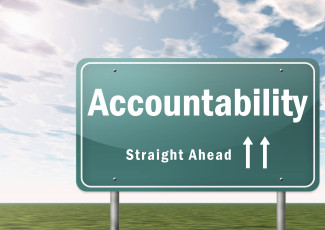Using Data to Drive Completion
By Emily Rogan
May 20, 2015
El Paso Community College has created programs that start students early and keep them on the path to success. The numbers point to more transfers and graduates.
As the economy improves and employment opportunities increase, community colleges across the nation face declining enrollments and reductions in state funding. At the same time, efforts to boost completion rates are at an all-time high. Officials at El Paso Community College (EPCC), in Texas, are using data-driven programs to support their students and keep them on the path to success.
At El Paso Community College, 85 percent of students get financial aid; of that number, 97 percent receive scholarship or Pell grant money, says William Serrata, president of the college. “These are border students, heavily Latino, first-generation,” he says. “I’m really data-oriented, but there are faces behind every data point.”
Like most of his students, Serrata and his siblings were the first in their family to attend college, so he understands how important retention and completion are to the population EPCC serves. And although he knows that numbers don’t tell the personal stories, they do tell the facts.
“I look at data completely and often,” Serrata says. “Over the years, the data tells us what to be focused on.”
Dual credit works
Serrata and his team at EPCC have found that dual credit — when students take one course in high school that counts both for high school and college credit — helps significantly drive up students’ completion rates. According to data from 2009, the more college credits students complete before enrolling in a Texas higher-education institution, the higher the percentage of those students who complete their degrees.
“We have about 5,000 dual-credit students at EPCC. Of the seniors who graduated in 2004, those who took between one to 12 credits had an 88 percent persistence rate. Five years after that, 49 percent had bachelor’s degrees, and 55 percent had associate degrees,” Serrata says.
Anecdotally, if a student completes 15 hours of college credits, “then the likelihood for success is exponential,” he explains. “Then they’ve already proven to themselves that they’re college-ready and that they’ve actually successfully completed a course. Success breeds success. They are in that class five days a week in high school.”
Serrata likes to say that while he doesn’t believe in silver bullets, dual credit is part of the “silver buckshot.”
The data behind transfers and reverse transfers
When EPCC students transfer to the University of Texas at El Paso (UTEP) with 30 credits and then earn an additional 36, their transcripts can be sent back to EPCC to be evaluated and awarded an associate degree, Serrata says.
“What if something happens, and they don’t complete their bachelor’s?” he asks. “We’ve awarded 5,000 associate degrees through reverse transfer. It increases the educational attainment for the region, and it’s the right thing to do for these students.”
Officials and educators at EPCC and UTEP work together closely in the best interest of students, Serrata says. “Seventy-four percent of students graduating from UTEP have EPCC credits on their transcripts. Part of our mission is successful transfer; we don’t see higher education as competition.”
Starting early to shift mindsets
As the economy has improved, EPCC has seen a decline of about 2,500 students since 2011. And across the state, Texas community colleges collectively have lower enrollments, which correlates directly to a cut in state funding.
One of Serrata’s biggest challenges is “maintaining a college-going culture even when the economy is robust.”
He notes that it’s important to communicate to families that as business and industry change, more people will require some form of higher-education degree. To that end, EPCC is working with its K–12 partners to “adopt” elementary schools in a pilot to teach elementary students the value of a college education. Teachers display their college diplomas, and the emphasis is on high school and college graduation.
“We’re changing the mindsets and paradigms,” he says. “We have to help parents understand that higher education is an investment in their children’s future.”








